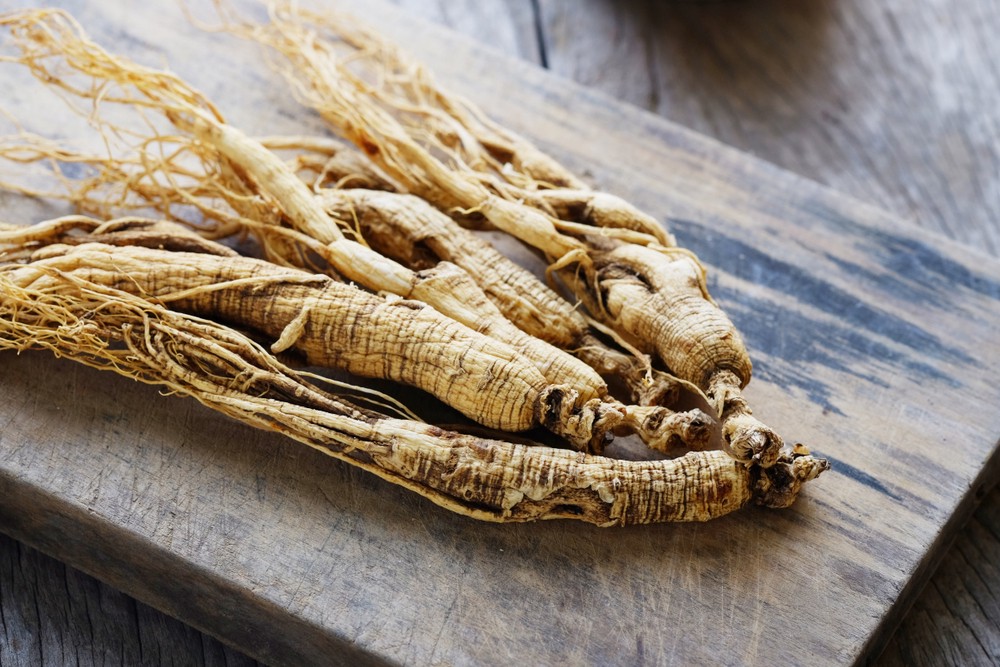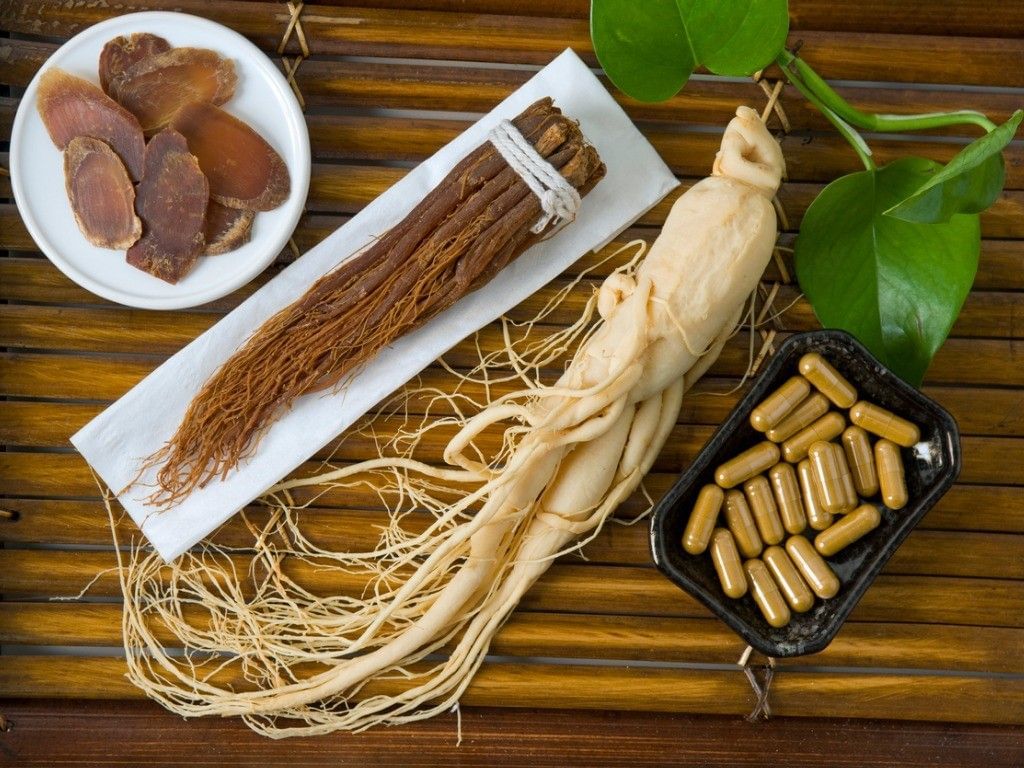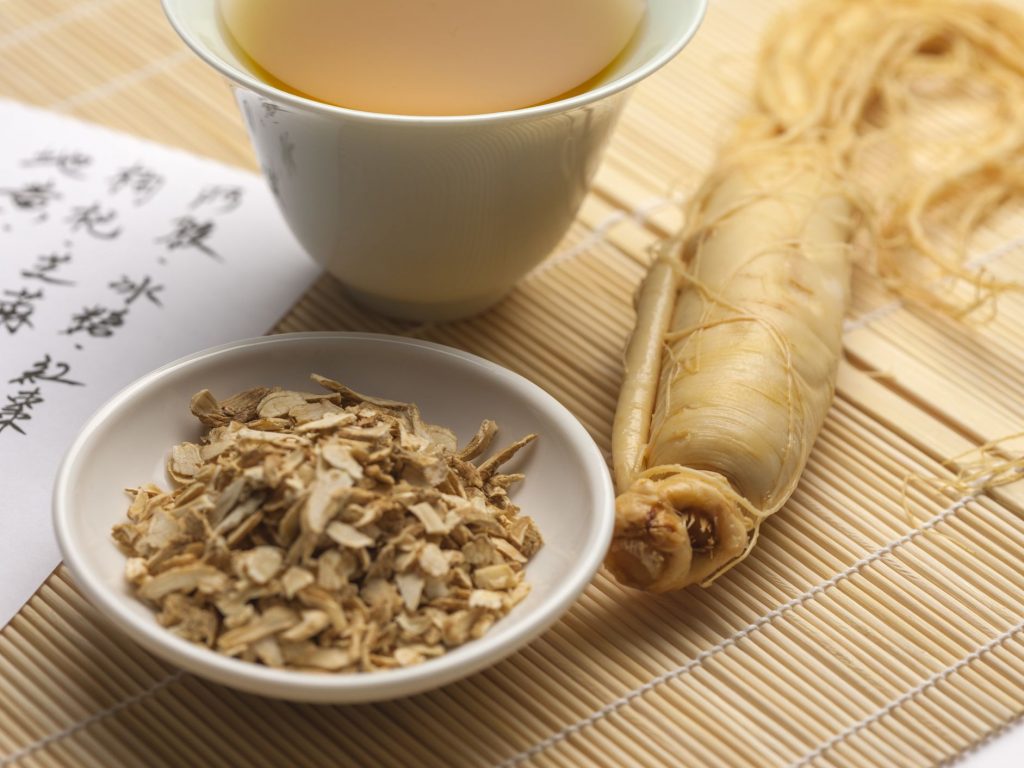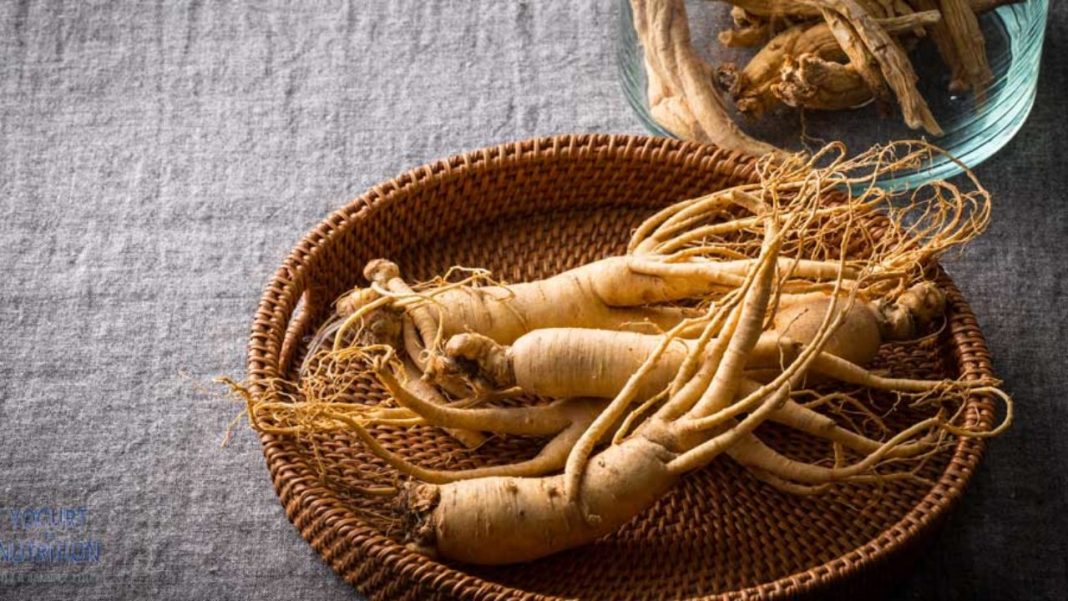A Brief History Of Ginseng- The Benefits Of Adding Ginseng In Your Diet – Nutritional Benefits of Ginseng- Ginseng Effects – Are There Any?
What comes to your mind when you hear the word ginseng? Most of the time, you will associate this with supplements, right? After all, many supplements, especially the herbal ones, include ginseng among its ingredients.
The question is why.
For hundreds of years, ginseng is used traditionally to help treat various diseases. At the same time, people use this to support and maintain their health and overall being.
Before you rush and buy a yearlong supply of ginseng, here are things you need to know about that popular plant.
Ginseng, In A Nutshell
Ginseng dates back to thousands of years ago where it is used as traditional medicine.
What exactly is ginseng?
The name ginseng came from the Chinese term, which means “person” and “plant root.” This is because the plant’s root looks like a person’s pair of legs; hence the name.
Some of its other physical characteristics include:
- Tan color
- Sturdy, fork-shaped taproots that could grow between two and 12 inches long
- Green leaves with an oval shape are palmately compound with three to five leaflets
As to its taste, ginseng is believed to have sweet, aromatic flavor.
In terms of plant family, this perennial plant belongs to the genus Panax in Araliaceae family. The term “Panax” was derived from Greek words, “pan” or all and “anox” or treat, which literally translates to “all heal.” This name was given by Russian scientist Carl Meyer during the first half of the 19th century.
Did you know that ginseng also come in variety? In fact, there are two main types of ginseng:
- Panax Ginseng – This is known as the Asian ginseng, Chinese ginseng, Korean ginseng, or red ginseng. It is native to Far East Asian countries including China and South Korea. Panax ginseng is also considered as the original ginseng.
- Panax Quinquefolius – This is commonly known as the American ginseng. It is native to regions in North America and can also be seen in Quebec and Manitoba in Canada and some states in the United States including Arkansas, Georgia, Louisiana, and Oklahoma. The state of Wisconsin has the greatest area of American ginseng cultivation.

What is the difference between the two? The truth is not much. Both types contain ginsenosides and gintonin, ingredients that complement each other in boosting one’s health. More importantly, they are used as adaptogens. This means regardless of what you use, the purpose of ginseng is to help restore your equilibrium.
Nonetheless, they are slightly different in terms of benefits. American ginseng is ideal in case you’re looking for a relaxing agent. On the other hand, Asian ginseng provides an invigorating effect.
Contrary to popular belief, Siberian ginseng (Eleutherococcus senticosus) and crown prince ginseng (Pseudostellaria heterophylla) are not considered as ginseng despite the similarities in the roots.
From the scientific name itself, you can easily tell that these two do not belong to the Panax family, which is the true family of ginseng. Also, they don’t have steroid glycosides, which are only found in ginseng from Panax genus.
Ginseng History
Ginseng has been around for thousands of years. In fact, it was discovered and believed to originate in the mountains of Northern China (known as Manchuria) some 5,000 years ago. Experts believed that ginseng was first used as a food and later on, as a cure to various diseases.
Eventually, ginseng became popular in China. In fact, Emperor Shennong, known as the Emperor of Five Grains, considered ginseng as similar to gold. Believe it or not, ginseng was reserved for royalty and non-royals who were caught in possession of this plant will be punished.
Sometime 2,000 years ago, Eastern Europe was introduced to ginseng. Linnaeus, also known as the Father of Botany, coined the term “Panax,” which means “all healing” in Greek. At that time, he was aware that ginseng was used as a form of treatment in early Chinese civilization; hence the name.
It’s a different story for American ginseng. Father Lafitau, a French Jesuit priest, first documented the existence of ginseng in North American in 1716. Prior to his discovery, experts believed that American Indians were already using ginseng.
Eventually, John Jacob Astor and Daniel Boone exported American ginseng to China. It also became their source of wealth since ginseng was a profitable product that could absorb transportation costs.
Fast forward today, ginseng, regardless of the variant, can be consumed in various forms. You can see ginseng in powder, pellets, and capsule form. You can also buy dried ginseng roots for your tea needs.
Ginseng Nutrition Facts
Ginseng, both Asian and American variants, contain the following nutritional components:
- Glycosides, specifically ginsenosides or panaxosides. Nonetheless, take note that the amount of glycosides for Asian and American ginseng differs from each other.
- Saponins wherein as the age of the ginseng plant increases, the amount of saponins increases, too
- Unsaturated fatty acids particularly linolenic acid, although this is more prominent on American ginseng
- Polysaccharides
- Phenolic compounds
- Amino acids
- Flavonoids
Ginseng Benefits
Early civilizations use ginseng for many reasons, although mainly to treat various conditions. Given the nutritional components, it’s not surprising why ginseng is a favorite ingredient in many supplements.

Potent Antioxidant
Based on the nutritional components, you can easily tell that ginseng is rich in antioxidants. In fact, a study published in the Journal of Pharmacy and Pharmacology concluded that wild ginseng roots have antioxidant and anti-inflammatory properties.
This is because of ginsenoside.
According to a study published in Molecules journal, ginseng extracts and ginsenosides have anti-inflammatory effects that could be helpful against anti-inflammatory disease.
A more recent study published in BMC Complementary and Alternative Medicine also proved ginseng’s antioxidant properties. This could be helpful for people with certain medical conditions, including those with eczema.
Even healthy and physically fit individuals could benefit from ginseng, too.
A study published in the American Journal of Chinese Medicine looked into the effects of Panax ginseng supplementation on exercise-induced muscle damage and inflammation response. Based on the experts’ findings, the group who took two grams of Korean red ginseng extract three times a day for seven days had lower inflammatory markers compared to the placebo.
If stress is an issue, then ginseng could be helpful, too. Based on a recent study published in the Journal of Ethnopharmacology, postmenopausal women who took three grams of red ginseng for 12 weeks recorded lower oxidative stress markers compared to the placebo group.
In other words, if you need to protect yourself against free radicals, then taking ginseng could help.
Lower Blood Sugar
Regulating your blood sugar is important for optimum health. In that case, adding ginseng in your diet could help.
According to a study, both American and Asian ginseng helps not only pancreatic cell function but also boost the production of insulin. Moreover, ginseng enhances the uptake of blood sugar in tissues and offers antioxidant protection to people with diabetes.
In another study published in Nutrition, Metabolism, and Cardiovascular Diseases, experts discovered that six grams of Korean ginseng, when taken along with the usual diabetes medication and diet, helped those with type 2 diabetes maintain an ideal blood sugar level. At the same time, there was a decrease in blood sugar levels by 11 percent and fasting insulin by 38 percent as well as an increase in insulin sensitivity by 33 percent.
However, watch the kind of ginseng you’ll use. To control diabetes, make sure that you use fermented red ginseng.
A study published in the Journal of Microbiology and Biotechnology showed that fermented red ginseng is more effective in controlling blood sugar. This is because the live bacteria found in fermented ginseng transformed ginsenosides into a component that is potent and easier to absorb.
A more recent study published in BMC Complementary Alternative Medicine found similar results. In the said study, participants with type 2 diabetes took 2.7 grams of fermented red ginseng for four weeks. Experts noted that those who had supplementation recorded lower blood sugar and an increase in insulin levels compared to placebo.
In other words, if you want to maintain an ideal blood sugar level, then go for fermented red ginseng.
Boosts Energy Levels
Do you constantly feel tired and less energetic? If you answered yes, then a cup of ginseng tea might just help.
Several animal studies revealed that Panax ginseng could provide anti-fatigue effects by lowering oxidative stress and increasing the production of energy in cells. It turns out that ginseng components such as polysaccharides and oligopeptides are responsible for the said effects.
What about the effect of ginseng in boosting energy levels on humans?
A recent study revealed that Panax ginseng might be your natural energy booster. In the said study, a group of people was given one or two grams of Panax ginseng for four weeks. After a month, experts noticed that those who took Panax ginseng experienced less physical and mental fatigue compared to the placebo. At the same time, there was a decrease in oxidative stress.
Another study also showed similar results. Based on a study published in the Journal of the National Cancer Institute, cancer survivors who experienced fatigue were given 2,000 mg of American ginseng to check the effectiveness of humans. After eight weeks, those who took ginseng experienced significantly lower fatigue levels compared to the placebo group.
More than just reducing fatigue levels, ginseng supplementation could also enhance one’s physical performance according to a study published in the Journal of Korean Medical Science.
An Immune System Booster
At this point, you’ve seen or heard the phrase “immune system booster” countless times. This is because a strong immune system could do wonders to your health including protecting yourself against bacteria and viruses. Consequently, a weak immune system means you are more prone to getting sick.
This is where ginseng comes in.
A study published in the Journal of Ginseng Research examined the effects of red ginseng extract on the immune system of individuals with advanced stomach cancer who underwent post-surgery chemotherapy. Based on the study, experts noticed that individuals who took red ginseng extract for three months had better immune system markers than the placebo group.
Another study published in the said journal also showed promising results on the effect of ginseng on one’s immune system. The study suggested that people with advanced colon cancer who include ginseng in their diet could have up to 35 percent chances of living disease-free after curative surgery. Consequently, there is also a 38 percent higher survival rate compared to those who are not taking ginseng.
The good news is ginseng’s immune-boosting properties are not limited to those with cancer. Based on a study published in Drugs Under Experimental and Clinical Research, ginseng extract also helps in enhancing the effects of vaccines against various diseases such as influenza.

Could Improve Erectile Dysfunction
Erectile dysfunction is a condition characterized by inability to maintain an erection that is firm enough to satisfy sexual activity.
Did you know that ED is the most common sexual dysfunction among men? In fact, the global prevalence of this condition is between three and 76.5 percent.
This is why ginseng is popular among men and can be found in most male enhancement supplements.
According to the Asian Journal of Andrology, Korean red ginseng can be an alternative treatment for erectile dysfunction. Another study published in the Journal of Urology concluded the same.
This is because ginseng has compounds that could protect the blood vessels and tissues against oxidative stress. This helps ensure proper blood flow and restore normal function down there.
Consequently, ginseng promotes the production of nitric oxide. This compound is responsible for relaxing the muscles, especially in the penis area. At the same time, it also helps with proper blood circulation, which is essential in maintaining an erection.
To prove this, a study published in the International Journal of Impotence Research showed that men treated with Korean red ginseng had a 60 percent improvement against the symptoms of ED.
Another recent study also showed that men with ED showed significant improvement in erectile function as well as experienced overall satisfaction after taking 1,000 mg of ginseng for two months.
Ginseng Side Effects
Not all that glitters is gold. Despite the health benefits, ginseng, although generally safe, is not exempted when it comes to side effects.
Who cannot take ginseng?
- Individuals with diabetes
- Those who are taking the anticoagulant drug since ginseng reduces its effectiveness
- People who are under antidepressants medication since this could cause tremors and manic episodes
- Those who are taking medications for blood pressure and a heart condition, including calcium channel blockers
- Individuals who are taking blood-thinning medications since it could increase the risk of bleeding
- Children
- Pregnant women
- Women who are breastfeeding
Even if you don’t belong to any of these groups, this doesn’t mean you are free to take ginseng anytime you want. Extended use of ginseng could make the plant less effective.
For safety, take ginseng in two to three weeks cycle. Make sure to take one or two weeks to break in between so that your body won’t get used to it. Otherwise, you might experience side effects such as:
- Headache
- Digestive problems
- Irritability
- Blurred vision
- Diarrhea
- Dizziness
- Decreased heart rate
- Dry mouth
- Changes to blood pressure and blood sugar
- Skin reaction
- Bleeding
- Swollen breasts and vaginal bleeding for women
- Delirium
- Convulsion or seizure
The key is to talk to your healthcare provider first, especially if you have existing medical conditions, about your intention to take ginseng. This way, you could reduce the possibility of experiencing these side effects that might compromise your health.
Ginseng Storage
Ginseng is often included in the health supplement you are taking. Let’s say you decided to get your own supply because you prefer to take it in its natural form.
Here are some things you need to remember to prolong ginseng’s shelf life:
- Place dried ginseng inside a box or paper bag.
- Never use plastic for storage. Plastic increases humidity and could cause the roots to mold.
Here is another way you can try when storing ginseng:
- Fry a bowl of rice grains in a pan until it turns yellow. Let it cool.
- Put ginseng roots in a jar, preferably a glass jar with an airtight container. This prevents regular exposure to oxygen, also known as oxidation, which could adversely alter the chemical quality of the ginseng roots.
- Pour the rice grains. Make sure that the grains were cooled down.
- Place in a dark, dry place, preferably room temperature that is away from direct heat or sunlight. This prevents photodegradation wherein the light triggers chemical changes on the surface of ginseng roots.
Doing this method will help ginseng last for several years. The roots will be able to retain its moisture, thereby reducing the possibility of mold growth. Consequently, it will preserve the quality of ginseng roots. Just make sure to change the rice grains every year to ensure freshness.
Is it okay to place the ginseng roots in a freezer? Yes, although this is not recommended. The ideal temperature is steady 5 degrees Celsius to prolong its shelf life.
Ginseng Recipe / Usage
The most popular way to use ginseng is by taking supplements. This is often in the form of capsule and can be taken with or without food.
Still, you want to take it in its most natural state, right? If that’s the case, then try making your own ginseng tea.
Here’s how:
- Boil about 20 ounces of water.
- Add one to three grams of ginseng root.
- Let it simmer for 20 to 30 minutes.
- Let it cool then add honey for a little bit of sweetness.
You can also make ginseng tea in big batch and simply store it in the refrigerator. This could last up to weeks and then reheat it in case you want a cup.
More than being used for tea, you can also add ginseng in your dishes. You can put ginseng on soup and stir-fry meals.
Aside from tea, ginseng can also be used as part of your skincare routine. Many countries include ginseng in the manufacture of skincare and cosmetic products like hair conditioner, shampoo, and body wash.
Believe it or not, ginseng also found its way on food products that are readily available in the market. In America, there are drinks and candies with American ginseng extract. You can also find ginseng extracts in Chinese alcoholic beverages as well as soups and salads in Korea.

Ginseng Alternative
Finding an alternative for ginseng can be tricky since ginseng itself is a class on its own. If you’re after the similar effects, then Siberian ginseng, also known as eleuthero, could be a good alternative.
Although not part of the Panax family, Siberian ginseng is still considered as an adaptogen. This means it can also help boost your physical endurance, memory, concentration, and energy levels. It could also give you the ginseng “feel” to satisfy your need for Panax ginseng.
Dosage is crucial because anything in excess is not recommended. Limit your intake to up to 200 milligrams per day.
Also, Siberian ginseng is not recommended for those with:
- High blood pressure
- Diabetes
- Heart conditions
- Individuals taking anticoagulants
This could lead to side effects such as:
- Insomnia
- Anxiety
- Headache
- Heart palpitations
- Increased risk of developing muscle spasms
The Bottom Line
There is a reason why ginseng is a favorite ingredient in many health supplements. Its nutritional components are top caliber as it has glycosides, saponins, phenolic compounds, and other compounds that are considered as antioxidants.
Because of these components, ginseng could protect your body against inflammation, is an effective and natural energy booster, and strengthen your immune system to protect you against various diseases. Men will benefit from this as well because it could help ensure sufficient blood flow necessary to maintain an erection.
Still, be careful. Make sure you are taking ginseng from the Panax family to enjoy these benefits. Dosage is crucial as well because taking too much for too long could lead to adverse effects. If you are currently on medication, then it is recommended that you consult your doctor first.
Overall, ginseng is among the healthiest plants you can include in your diet. Just make sure you won’t abuse your intake.
